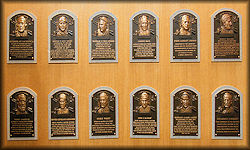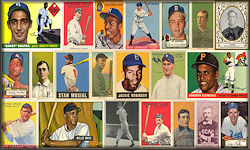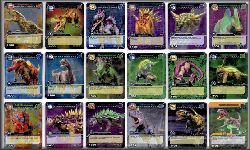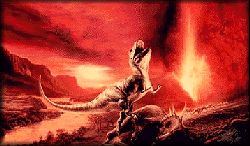He was the man who brought a midget to home plate and explosives to the outfield of Comiskey Park. But beyond the flash, legendary owner Bill Veeck’s open-minded approach brought positive changes to the game of baseball.
Veeck was just four years old when his father, sportswriter William Veeck, Sr., was named president of the Chicago Cubs. As a teenager, the younger Veeck learned about team management while he worked multiple jobs as a vendor, ticket salesman and junior groundskeeper.
In 1941, Veeck partnered with former Cubs star Charlie Grimm to buy the Triple-A Milwaukee Brewers. Arriving in Milwaukee with just 11 dollars in his pocket, Veeck put his creative mind to work. He gave away live animals during Brewers games, scheduled morning games for night-shift workers and staged weddings at home plate. Five years and three American Association pennants later, Veeck sold the Brewers for a $275,000 profit.
After a stint in World War II, during which he lost his right leg, Veeck sought a path into the major leagues. Devising a debenture-stock group that enabled financial backers to put the majority of their money into loans for the team, Veeck was able to become a minority owner of the Cleveland Indians for only $268,000 in 1946.
Relishing his first chance in the big leagues, Veeck immediately enlivened a franchise that hadn’t won a World Series since 1920. He hired a clown, Max Patkin, to be coach and put the Indians’ games on the radio. Veeck also staged a ‘Good Old Joe Earley Night’ for a fan who complained that the Indians were honoring everyone except the average Joe.
In 1947, Veeck made his biggest imprint to date when he signed Larry Doby as the first African American player in American League history.
“One by one, [manager] Lou [Boudreau] introduced me to each player,” Doby recalled. “All the guys put their hand out – all but three. As soon as he could, Bill Veeck got rid of those three.”
The following year, Veeck signed 42-year-old Negro League legend Satchel Paige, making Paige the oldest rookie in major league history. Later that fall, the Indians completed their transformation by winning their first World Series in 28 years.
Never a man to look back, Veeck famously buried the Indians’ 1948 championship flag in 1949 when it was clear the team was not going to repeat. An expensive divorce settlement forced him to sell his stake in the team.
Veeck re-emerged two years later when he bought the struggling St. Louis Browns franchise. Though the Browns shared Sportsman’s Park with the more successful Cardinals, Veeck immediately ruffled the Redbirds’ feathers by hiring former Cardinals stars Rogers Hornsby and Marty Marion as managers. He also decorated Sportsman’s Park exclusively with Browns memorabilia.
Though the stadium felt more accommodating, the Browns still struggled out of the gate in 1951. Anxious to attract more fans, Veeck came up with arguably his most creative publicity stunt.
“What can I do,’ I asked myself, ‘that is so spectacular that no one will be able to say he had seen it before?’” Veeck recalled. “The answer was perfectly obvious: I would send a midget up to bat.”
On Aug. 19, 1951, a 3 foot 7 inch man named Eddie Gaedel walked to the plate as a pinch hitter for the Browns. Wearing the uniform number “1/8,” Gaedel used his miniscule strike zone to draw a walk on four pitches. He was promptly replaced for a pinch runner at first base, completing his day as the shortest man to ever play in the major leagues. The next day, American League president Will Harridge denounced the stunt as a mockery of the game and voided Gaedel’s contract.
“I try not to break the rules but merely to test their elasticity,” Veeck would later say.
Five days after the Gaedel stunt, Veeck was at it again. He introduced “Grandstand Manager’s Day,” in which fans were given placards that told manager Zack Taylor whether the team should steal a base, bunt or change pitchers. With Taylor sitting back in a rocking chair, Veeck and the fans skippered the Browns to a 5-3 victory over the Philadelphia Athletics.
“I have discovered in 20 years of moving around a ballpark that the knowledge of the game is usually in inverse proportion to the price of the seats,” Veeck said.
Attendance doubled for the Browns even though the team remained in the cellar from 1951-52. But despite Veeck’s best efforts, the Browns’ financial issues – coupled with increasing pressure from opposing owners – forced him to sell the team to a group from Baltimore after the 1952 season.
Veeck was back in baseball in 1959 when he bought a controlling interest in the Chicago White Sox. Later that year, the White Sox captured their first AL pennant in 40 seasons and set a team attendance record with 1.4 million paying fans. True to form, Veeck immediately made his mark by installing baseball’s first “exploding scoreboard” at Comiskey Park and adding players’ names to their uniforms.
Poor health forced Veeck to sell the White Sox in 1961, but he returned to the owner’s box at Comiskey in 1975. In his elder years, Veeck was as active as ever. He conducted four trades in a hotel lobby, in full view of the public. He was the man who encouraged announcer Harry Caray, a future Ford C. Frick Award winner, to sing “Take Me Out to the Ballgame” to the Chicago faithful. And in 1979, Veeck saved his most explosive promotion for last when he hosted “Disco Demolition Night,” an event that caused a riot at Comiskey and forced the White Sox to forfeit a game to the Detroit Tigers. (Ref: National Baseball Hall of Fame) |





